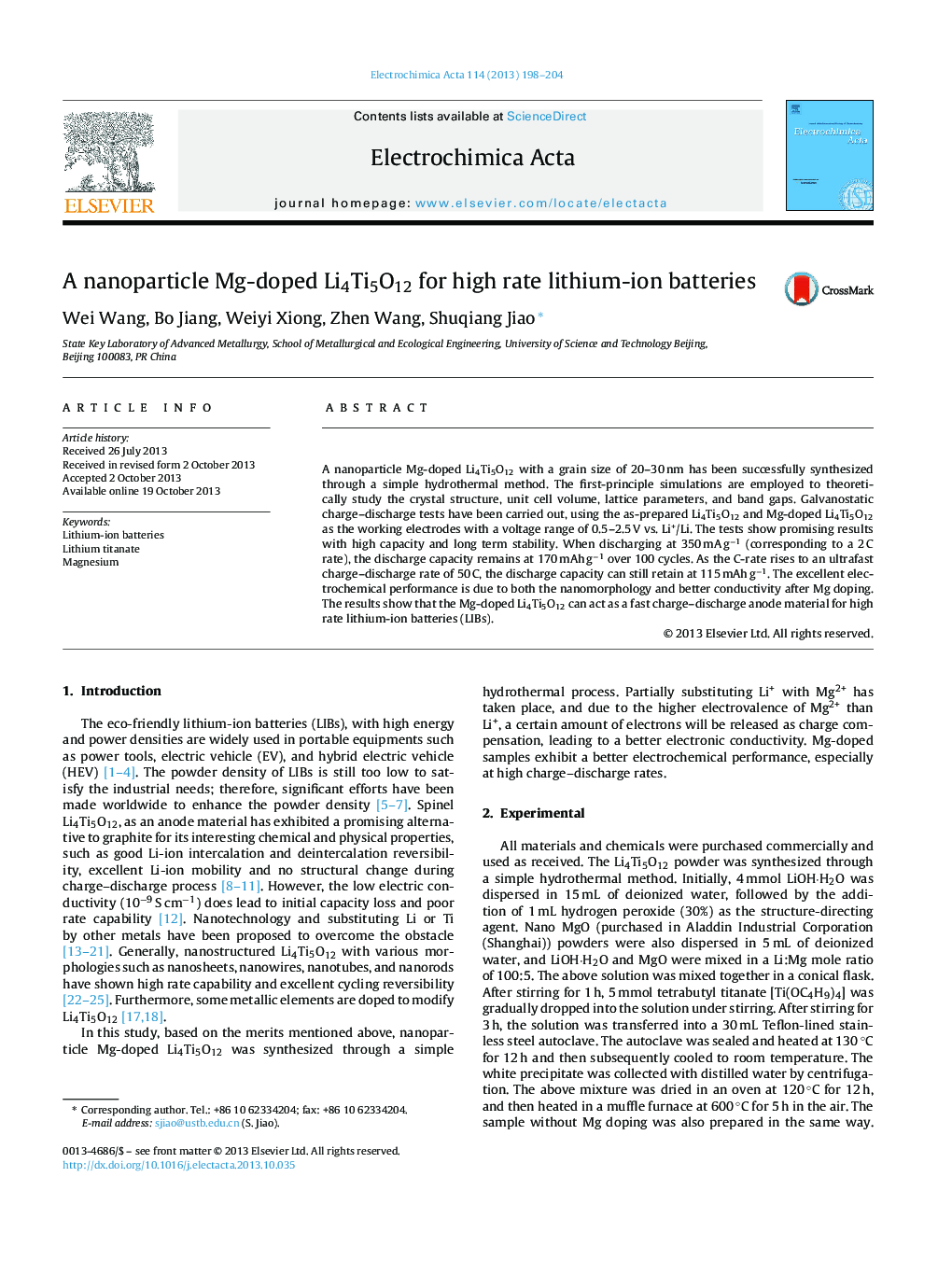| Article ID | Journal | Published Year | Pages | File Type |
|---|---|---|---|---|
| 186451 | Electrochimica Acta | 2013 | 7 Pages |
A nanoparticle Mg-doped Li4Ti5O12 with a grain size of 20–30 nm has been successfully synthesized through a simple hydrothermal method. The first-principle simulations are employed to theoretically study the crystal structure, unit cell volume, lattice parameters, and band gaps. Galvanostatic charge–discharge tests have been carried out, using the as-prepared Li4Ti5O12 and Mg-doped Li4Ti5O12 as the working electrodes with a voltage range of 0.5–2.5 V vs. Li+/Li. The tests show promising results with high capacity and long term stability. When discharging at 350 mA g−1 (corresponding to a 2 C rate), the discharge capacity remains at 170 mAh g−1 over 100 cycles. As the C-rate rises to an ultrafast charge–discharge rate of 50 C, the discharge capacity can still retain at 115 mAh g−1. The excellent electrochemical performance is due to both the nanomorphology and better conductivity after Mg doping. The results show that the Mg-doped Li4Ti5O12 can act as a fast charge–discharge anode material for high rate lithium-ion batteries (LIBs).
